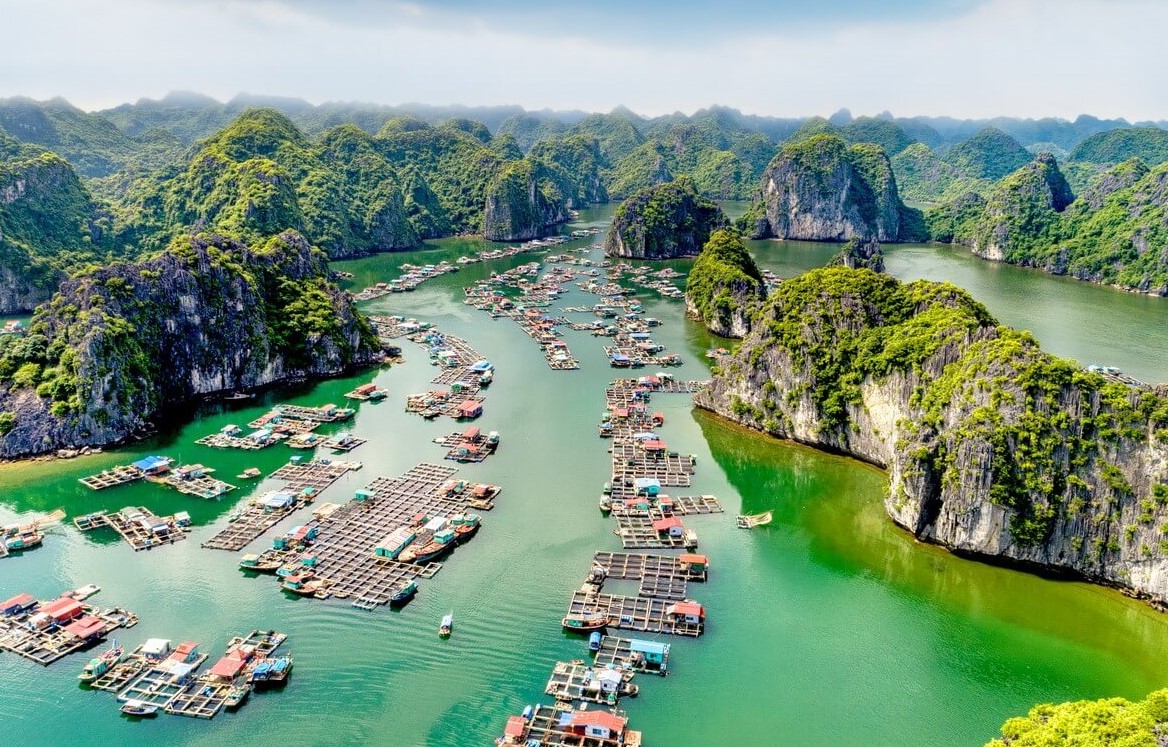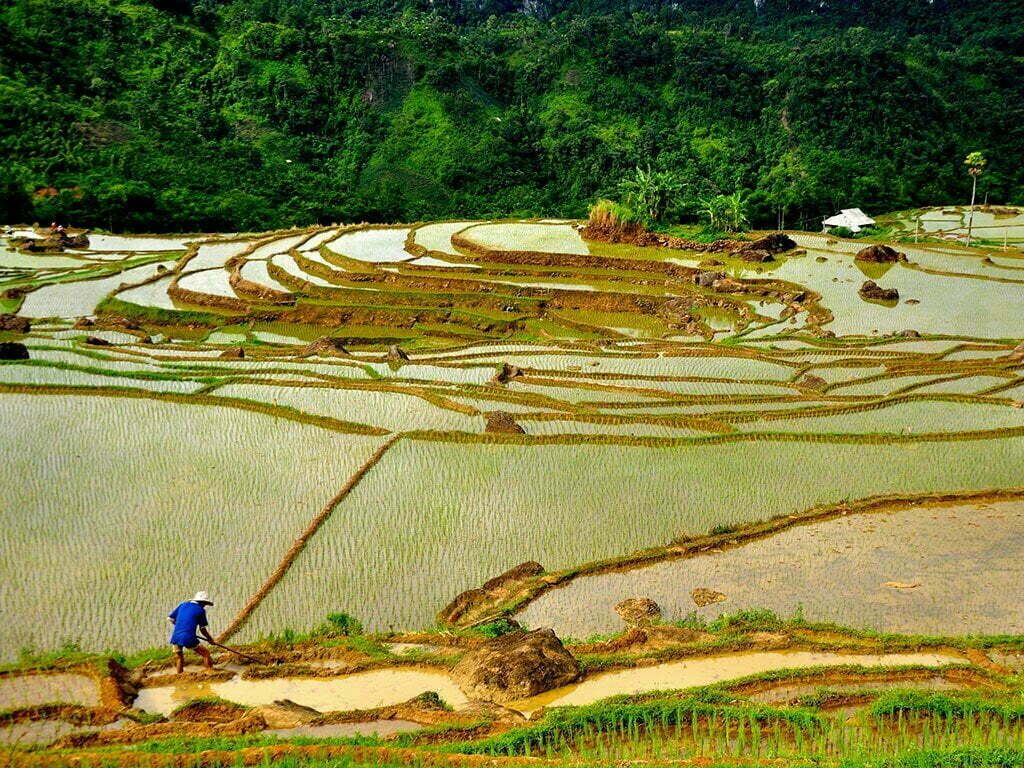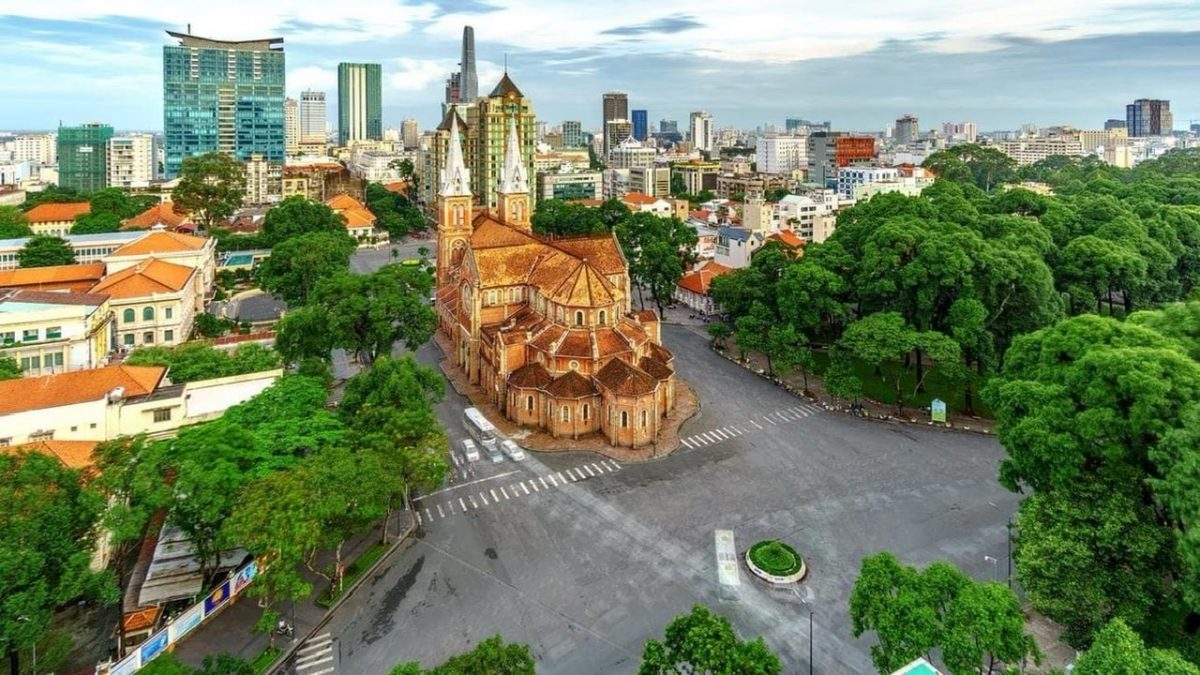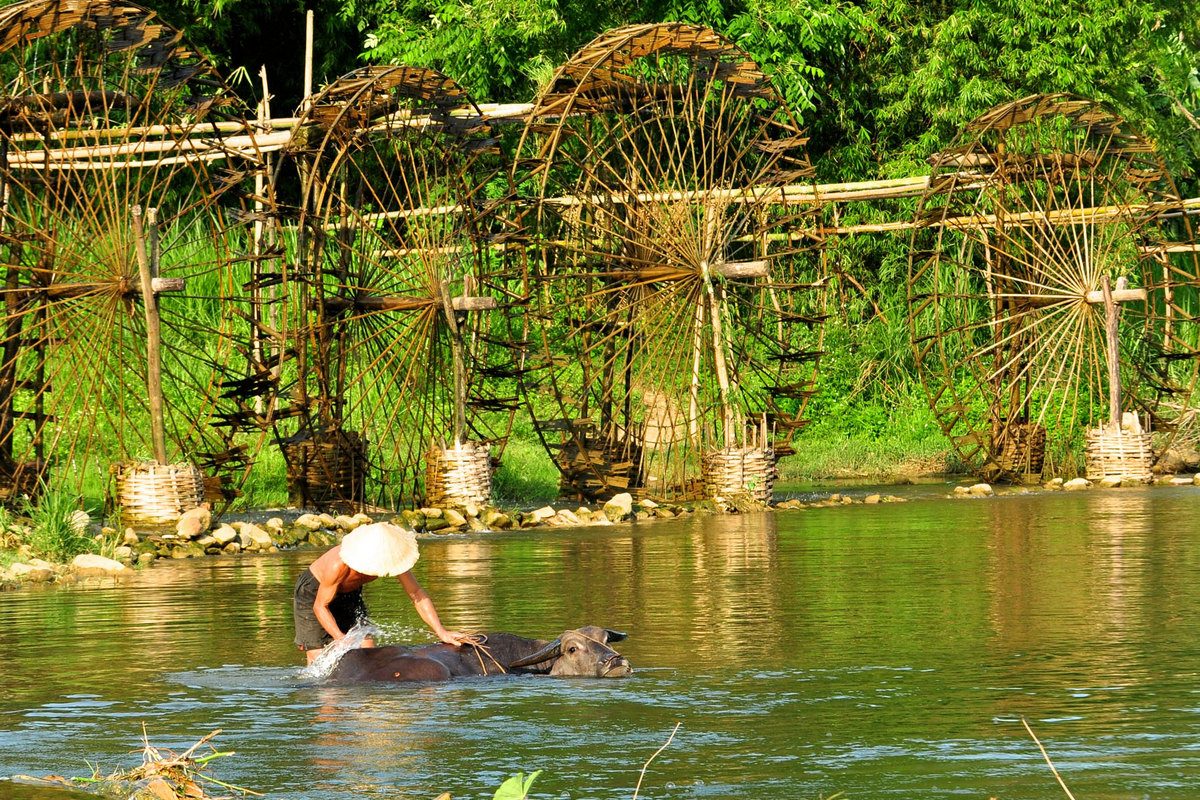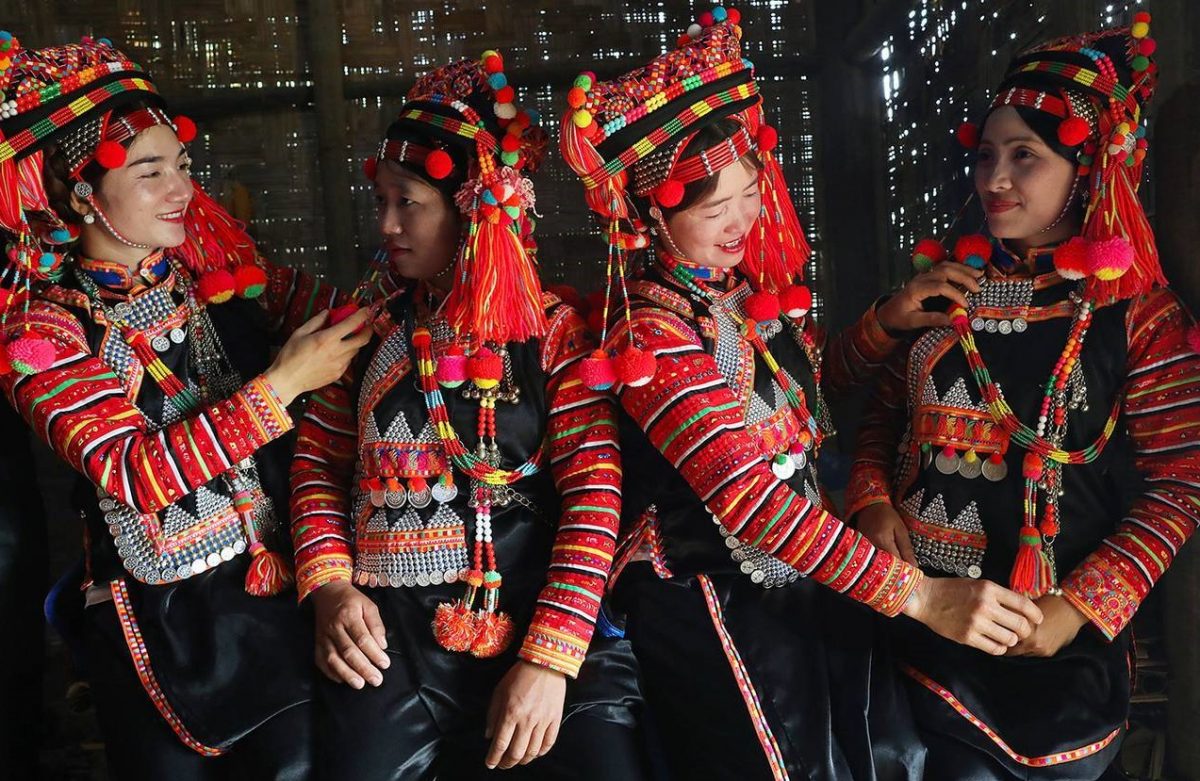Republic of the Union of Myanmar
Population: 54 million
Capital City: Naypyidaw (Pop: 925.000)
People: Bamar 68%, Shan 9%, Karen 7%, Rakhine 4%,
Chinese 3%, Indian 2%, Mon 2%, other 5%
Language: Myanmar (Bamar)
Currency: Kyat (MMK)
Time Zone: GMT + 6:30 Hours
International Dialing Code: +95
HISTORY
In 1044, King Anawrahta, a Myanmar ruler, united the region and founded the First Myanmar Empire, that lasted nearly 250 years. The kingdom’s capital, Bagan, is situated on the Ayeyarwaddy (Irrawaddy) River in the central part of the country. The Myanmar has adopted features of the Mon and Pyu cultures, including Theravada Buddhism. Mongol invaders led by Kublai Khan captured Bagan in 1287, shattering the kingdom.
The Second Myanmar Empire founded by King Bayintnaung at Taungoo during the 1500’s. The Third and last Myanmar Empire was founded by king Alaungpaya. The first war was fought from 1824 to 1826, the second in 1852, and the third in 1885. With these wars, the British gradually annexed the whole country to its empire and named the country Burma.
In 1942, Japan occupied Myanmar. Young Myanmar nationals formed Burma Independence Army with the help of the Japanese and drove the British out of Burma. Through the dislike of the Japanese rule, a group of Myanmar university students, led by General Aung San, formed a league called Anti-Fascist People’s Freedom League (AFPFL) to fight the Japanese and they helped Britain and Allied powers regain Burma in 1945 and return to power. The British had to give Burma full independence on January 4, 1948.
CULTURAL & TRADITION
Myanmar has a population of over 53 million people (annual growth rate of 1.61%) with major races are Bamar, Kachin, Kayah, Kayin, Chin, Mon, Rakhine and Sha. Myanmar is a Buddhist country with the Buddhists making up about 80 percent of the population, following the school of Theravada Buddhism. There are also Christians, Muslims, Hindus and some animists (Religious: 89% Theravadas Buddhist, 4% Christian, 4% Muslim, 1% Hindu, and 1% Animist). But it respects the freedom of belief and the people practice religious tolerance on other religions which is evident in the existence of different beliefs in large cities. Although the fact that Myanmar lies between two great civilizations, India and China, and is largely influenced by the civilization of India, it has developed its own culture with distinctive characteristics. The unique thing about Myanmar culture is that it is free from racial or sex discrimination from childbirth throughout the lifetime.
General Information
PASSPORT & VISA
A passport with at least six months validity from the date of entry into Myanmar is required. We recommend you make a photocopy of your passport and keep it somewhere separate, or scan your passport and keep the scan in an accessible email account.
Visitors to Myanmar can obtain an e-visa prior to arrival for a length of stay of 28 days. The arrival points are Yangon, Mandalay and Nay Pyi Taw International Airports and a number of land border checkpoints with Thailand. The validity of the e-visa is 90 days from the issue date.
WEATHER
The climate of Burma (Myanmar) is roughly divided into three seasons: summer, rainy and cold season. From March to mid-May are summer months; the rain falls from mid-May to the end of October and the cold season starts in November and ends in the end of February. Generally, Myanmar enjoys a tropical monsoon climate. However, climatic conditions differ widely from place to place due to widely different topographical situations. Central Myanmar has an annual rainfall of less than 40 inches while the Rakhine coast gets about 200 inches. Besides, the average highest temperature in Central Myanmar during the summer months March and April is above 110° F (43.3°C) while in Northern Myanmar is about 79° F (36.1° C) and on the Shan Plateau between 85° F and 95° F (29.4° C and 35° C). Temperature of towns varies according to their location and elevation. Mountain ranges of Myanmar created different climatic condition, rain forest that makes regular rainfall for the rice farmers and also acting as natural barrier which protecting the mainland from typhoon and hurricane.
CLOTHING
Cool, comfortable cotton is the most suitable fabric for Myanmar’s warm, humid tropical climate. Locally made cotton is available at most destinations.
For travelers heading to high altitude destinations (such as Kyain Tong, Inle Lake, Golden Rock and Putao) and if the trip consisted of taking boasts on lakes and cruising on rivers, it is advisable to take a sweater or jacket as it can be chilly at night and while taking the boats.
One should bring flip flops (or) easy-to-take-off shoes as there would be several shoes-off places of interest. Visitors are expected to properly dress while visiting religious monuments like monasteries, pagodas and temples. Covering shoulders and knees is considered appropriate.
CURRENCY:
The official currency of Myanmar is the Kyat (MMK). Foreign currency can be exchanged at recognized outlets such as banks, airports and bureau de change centres. All foreign currency should be clean and free from any marks, rips or tears or may not be accepted.
ATMs that accept VISA and MasterCard are available in the main cities of Nay Pyi Taw, Yangon and Mandalay, dispensing money in Kyat. The maximum withdrawal is approximately US$300. There are few if any ATMs outside of the major cities and credit cards may not be accepted at hotels, so precautions should be taken.
Therefore, the best way to handle money in this part of the world is to bring U.S. dollars. Kindly make sure any American money you bring is in good condition and are not dirty, damaged or tattered. Each day, make sure that you have enough small bills in local currency for your daily needs (snacks, shopping, etc.).
Myanmar’s national currency, the kyat (pronounced chat, and abbreviated K) is divided into the following banknotes: K1, K5, K10, K20, K50, K100, K200, K500 and K1000. You can exchange US dollars or euros to kyat in official exchange counters, hotels or travel agents.
PHONES & INTERNET SERVICES
Local sim cards are now available to purchase at the airport or local convenience stores for domestic calls only. International roaming is not widely accessible in Myanmar and we suggest you contact your local telco provider for more information. International subscriber dialing is available at all major hotels although very expensive.
Internet access is available in most major tourist areas as well as larger hotels, restaurants and airports. Connections are relatively slow by western standards and can be unstable from time to time.
Myanmar International postal services delivering worldwide, mostly route through Singapore, Bangkok and Seoul. DHL is also available for express deliveries.
TRAFFIC & TRANSPORTATION
Taxi’s are the main form of transportation in the major cities with fares within city limits ranging from MMK1000 – 4000. There are no metered taxis in Myanmar and a price needs to be agreed upon with the driver before starting the journey.
LUGGAGE ALLOWANCE
There is a 20 kilo limit for baggage per person and excess baggage fees may be charged. It is advisable that you leave items not needed in Yangon and collect them upon your return.
SAFETY TIPS
Crime in Myanmar: Most travelers’ memories of locals grabbing your money are of someone chasing you down because you dropped a K 500 note in the street. In remote towns such as Shwebo or Monywa, you can feel pretty confident leaving a bag on the ground at a bus station while you go for a quick tea. But don’t tempt anyone. There has been a smattering of reports of street crime, particularly in Yangon, which include burglaries of some expats’ homes. Exercise guarded caution on vulnerable occasions when you’re carrying your bags – and when in particularly touristy places.
HEALTHY
Before travelling, please ensure you have adequate protection against disease. Contact your doctor or health clinic for the latest medical advice on the vaccinations you need, no less than two months before your departure. Malaria is common in SE Asia and is mainly confined to remote and rural areas.
TRAVEL INSURANCE (recommended)
The Time Journeys does everything possible to ensure a safe and enjoyable trip. However, travel inevitably involves some unavoidable risk. Travel insurance is a cost effective way of protecting yourself and your equipment should any problems occur such as cancelled trips, delays, medical emergencies, baggage loss or damage. Please also make sure your travel insurance covers all activities planned on your trip so you can enjoy peace of mind during your journey.
CULTURE & CUSTOMS
Etiquette and cultural differences. Some Courtesies at Pagodas/Monasteries. Pay attention to:
Myanmar is the land of Pagodas, which overwhelm the country, forming the fascinating landscapes. When we visit the pagodas and temples, which are considered the most important, there are some advices to be careful.
– Please take off the shoes and socks when we enter the pagodas, temples or monasteries compounds. We have to go on barefoot and it would be more convenient to wear the slippers during the trip so that we can easily take on and take off before and after visiting one pagoda to another.
– Please wear decently; long pants or longyis are highly appreciated. Please keep shoulders covered.
– Please visit the pagodas, temples or monasteries according to the clockwise.
– Buddha images are sacred objects, so don’t pose in front of them for pictures and definitely do not clamber upon them.
– It is possible to take the photos to the pagodas, temples (except some archaeological monuments) or the people. However, it would be better to ask the permission if you want to make the persons nearby.
– As in other Buddhist countries the head is the highest part of the body-spiritually as well as literally. We should never deliberately touch somebody else on the head or pat a child on the head.
– The feet are the lowest part of the body; don’t point your feet at somebody.
– Indicating something with the foot is not the polite manner; please be take care not to lay down the feet toward the Buddha or the monks or even the normal persons.
– Monks are not supposed to touch or be touched by women. If a woman wants to offer something to a monk, the objects should be placed within reach of the monk, not handed directly to him.
– When we speak with the monks, the elder peoples or high rank persons, we should maintain the attitude of humble respect.
PUBLIC HOLIDAYS
Myanmar is a Land of Festivals: a festival for every month of the year. The dates of the festivals and special events usually fall on the full moon day of the month. Most festivals are cultural and religious. Majority is nation-wide celebrated while a few are distinctly regional.
Please try to arrange your travel to coincide with a festival in Myanmar. These unique celebrations, such as the annual Phaung Daw Oo Pagoda Festival around Inle Lake offer a perfect chance to visit villages and join the locals as they celebrate their festivals throughout the year. Water Festival is mid of April and hard to travel during water festival in Myanmar.

